
Pasadena is a city in the U.S. state of Texas, located in Harris County. It is part of the Houston–The Woodlands–Sugar Land metropolitan area. As of the 2020 U.S. census, the city's population was 151,950, making it the twentieth most populous city in Texas and the second most populous in Harris County. The area was founded in 1893 by John H. Burnett of Galveston, who named the area after Pasadena, California, because of the perceived lush vegetation.

The city of Houston in the U.S. state of Texas was founded in 1837 after Augustus and John Allen had acquired land to establish a new town at the junction of Buffalo and White Oak bayous in 1836. Houston served as the temporary capital of the Republic of Texas. Meanwhile, the town developed as a regional transportation and commercial hub. Houston was part of an independent nation until 1846 when the United States formally annexed Texas. Railroad development began in the late 1850s but ceased during the American Civil War. Houston served the Confederacy as a regional military logistics center. The population increased during the war and blockade runners used the town as a center for their operations.

Downtown is the largest central business district in the city of Houston and the largest in the state of Texas, located near the geographic center of the metropolitan area at the confluence of Interstate 10, Interstate 45, and Interstate 69. The 1.84-square-mile (4.8 km2) district, enclosed by the aforementioned highways, contains the original townsite of Houston at the confluence of Buffalo Bayou and White Oak Bayou, a point known as Allen's Landing. Downtown has been the city's preeminent commercial district since its founding in 1836.
The George R. Brown Convention Center (GRB), opened on September 26, 1987, is located on the east side of Downtown Houston, Texas, United States.

Experiment Farm Cottage is a heritage-listed former farm and residence and now house museum at 9 Ruse Street, Harris Park, City of Parramatta, Sydney, Australia. It is one of Australia's oldest standing residences, being built in c.1834. It is located at the site of Experiment Farm, Australia's first European farmstead, which was itself created by Australia's first land grant. It was added to the New South Wales State Heritage Register on 2 April 1999.

Braeswood Place is a group of subdivisions in Harris County, Texas, United States. The vast majority of the land is in Houston while a small part is in Southside Place.

Rice Military is a neighborhood in Houston, Texas, United States. The Beer Can House is located in Rice Military.

Old Braeswood is a neighborhood of single family homes in Houston, Texas, United States. It is generally bounded by South Main, North Braeswood, Kirby Drive, and Holcombe. The Texas Medical Center, Rice University, Rice Village, and the NRG Center complex are all within a one-mile radius. Nearby neighborhoods include Southgate, West University Place and Braeswood Place.

Hermann Park is a 445-acre (180-hectare) urban park in Houston, Texas, situated at the southern end of the Museum District. The park is located immediately north of the Texas Medical Center and Brays Bayou, east of Rice University, and slightly west of the Third Ward. Hermann Park is home to numerous cultural institutions including the Houston Zoo, Miller Outdoor Theatre, the Houston Museum of Natural Science, and the Hermann Park Golf Course, which became one of the first desegregated public golf courses in the United States in 1954. The park also features the Mary Gibbs and Jesse H. Jones Reflection Pool, numerous gardens, picnic areas, and McGovern Lake, an 8-acre (32,000 m2) recreational lake.

Fourth Ward is one of the historic six wards of Houston, Texas, United States. The Fourth Ward is located inside the 610 Loop directly west of and adjacent to Downtown Houston. The Fourth Ward is the site of Freedmen's Town, which was a post-U.S. Civil War community of African-Americans.
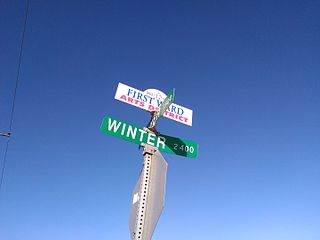
The First Ward of Houston, which is located inside the 610 Loop, is one of the city's historic wards. It was originally the center of the business district for the city, and was strategically located at the intersection of Buffalo Bayou and White Oak Bayou, near an area now known as Allen's Landing. It was one of the original four wards in Houston when it was created in 1840. It was defined as all area within the city limits of Houston north of Congress Street and west of Main Street.

The architecture of Houston includes a wide variety of award-winning and historic examples located in various areas of the city of Houston, Texas. From early in its history to current times, the city inspired innovative and challenging building design and construction, as it quickly grew into an internationally recognized commercial and industrial hub of Texas and the United States.

Idylwood is a historic neighborhood in the southeastern part of the I-610 loop in Houston, Texas. Idylwood, as of 2021, is the most expensive neighborhood in the East End. As of that year its houses were priced between $295,000 and $679,900. It currently has approximately 340 homes. Bill England, a redeveloper in the East End area, stated in 2004 that Idylwood appealed to buyers who are priced out of houses located in the cities of Bellaire and West University Place.
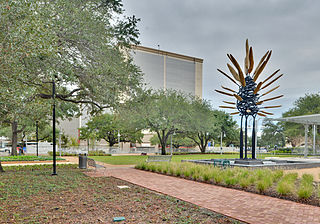
Main Street Market Square Historic District is a historic district in Houston, Texas that includes the Market Square Park. It includes buildings nearby, as well as the square itself. It was listed on the National Register of Historic Places in 1983.

Harry Daniel Payne (1891–1987) was an American architect and engineer; protégé of noted St. Louis Architect, William Ittner. Payne is most known for building designs in the U.S. State of Texas after 1926, but before this as a member of the Ittner Firm, he designed schools and hospitals in other states. Payne was born in St. Louis, Missouri, and was trained at Washington University in St. Louis. Upon graduation, he attended Fort Sheridan Officers Training School, and served in World War I in Company H, 320th Infantry, 80th Division. On September 25–26, 1918 he fought in the Meuse-Argone Offensive, leading men of H Company to take Dead Man's Hill. Payne received a battlefield commission to Captain just before the Armistice. He returned to St. Louis after the war to work with the Ittner form until 1926. That year he was recruited by Houston School Board to design all new schools for the city. After this contract was completed he went on to design schools, jails, office buildings, stadiums, houses and museums in Texas including for Anahuac ISD, Beaumont ISD, Corpus Christi ISD, Houston ISD, and Huntsville ISD.
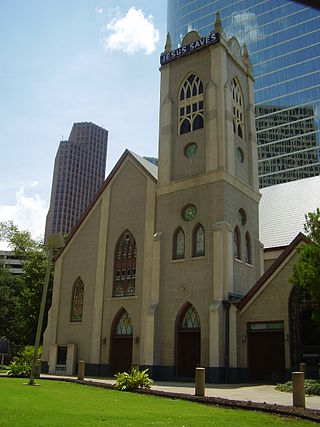
Antioch Missionary Baptist Church is a historic Baptist church at 500 Clay St in Downtown Houston, Texas. It was historically a part of the Fourth Ward. As of 2012 it was the only remaining piece of the original Fourth Ward east of Interstate 45.
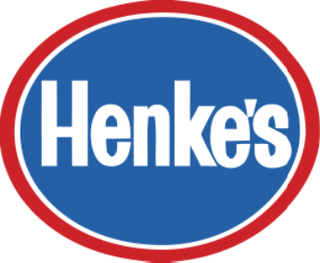
Henke & Pillot was a chain of supermarkets headquartered in Houston, Texas. The chain began in 1872. During its final years of existence, it was a subsidiary of Kroger, which acquired Henke's in 1955. In 1966, Kroger announced the retirement of the Henke & Pillot name.
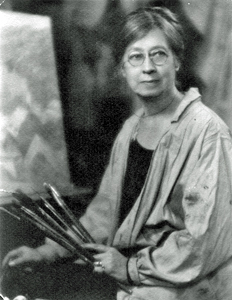
Emma Richardson Cherry was an American painter of landscapes, still lifes and portraits.
Courtlandt Place, Houston is a residential subdivision consisting of a single street, south of downtown Houston, planned in 1906. Courtlandt Place is a member of the Neartown Houston Association.
Samuel Houston Brashear was a lawyer, judge, and mayor of Houston. Brashear was elected as District Judge in 1892 and challenged Horace Baldwin Rice for mayor in 1898. He served as mayor for two terms and resigned in 1900 to pursue a legal practice.





































